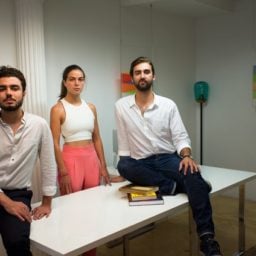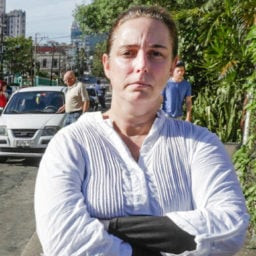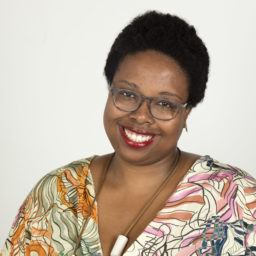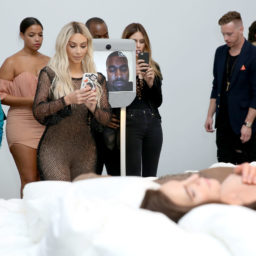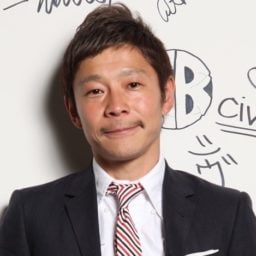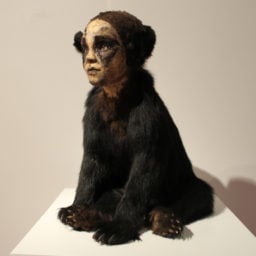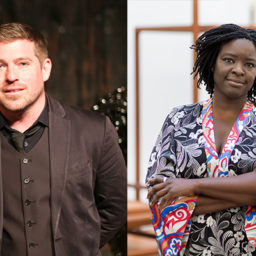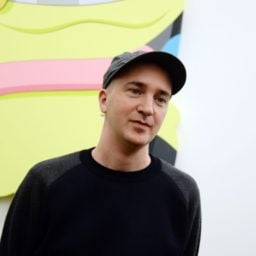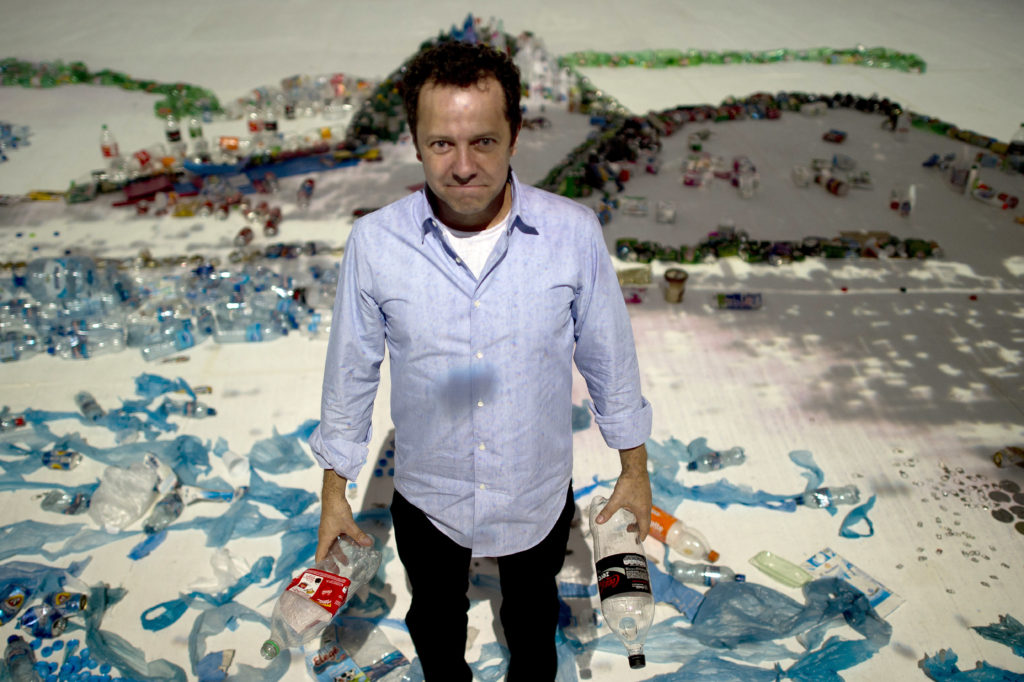

For the second consecutive year, artnet News set out to identify 10 players who are disrupting the status quo.
This year’s edition, like last year’s, is a “subjective, non-comprehensive list of colleagues who have changed the shape of the American art world,” as Brian Boucher writes.
Even still, game changers are necessary to any industry—especially the art world. From artists like Tania Bruguera and Derrick Adams—who are both engaged in activist and curatorial practices, pushing the parameters of what it means to be an artist, to collector Estrellita Brodsky, who’s taking the presentation of Latin American art into her own hands—these disruptors are changing the way we experience art.
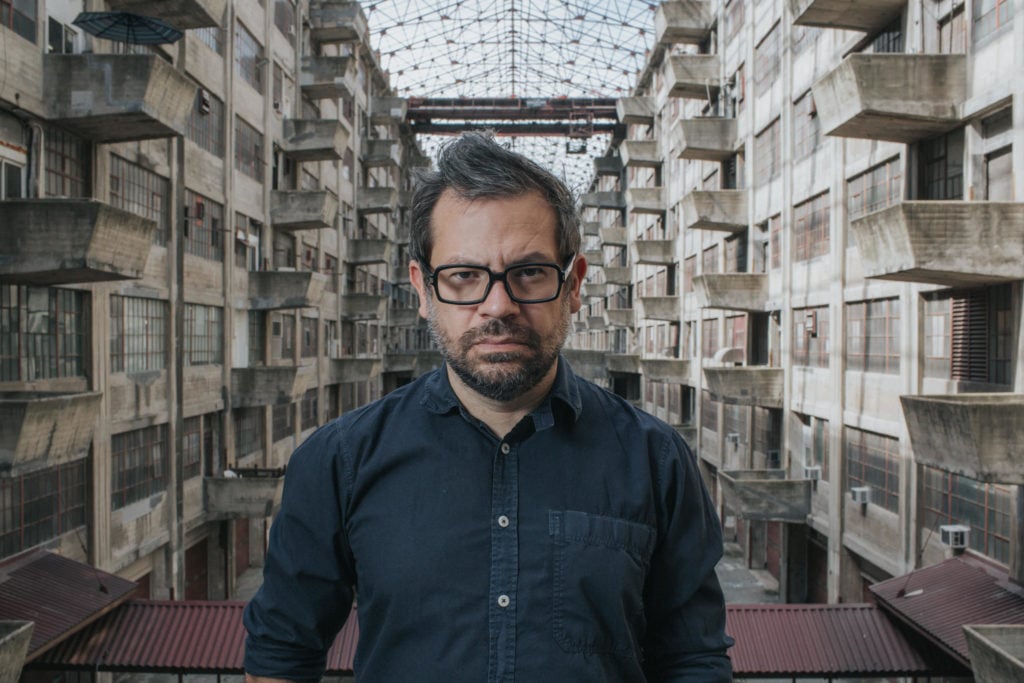
Pedro Reyes. Courtesy Will Star | Shooting Stars Pro.
1. Pedro Reyes
Doomocracy, the brainchild of Mexican-born artist Pedro Reyes, has been the talk of the fall art season, not surprisingly striking a chord with the American public as the US presidential election looms ahead.
In his review for artnet News, critic Christian Viveros-Faune lauded Reyes for having his finger on the pulse, writing: “If, like me, you find that the presidential election has morphed from merely obnoxious to absolutely nightmarish, then by all means run, don’t walk, to Creative Time’s latest piece of collective art-led catharsis.”
The show, on view at the Brooklyn Army Terminal through November 6, aims to mark the “confluence of two events haunting the American cultural imagination: Halloween and the presidential election,” according to Creative Time. Art 21 aptly describes Reyes as an artist who “designs ongoing projects that propose playful solutions to social problems. From turning guns into musical instruments, to hosting a People’s United Nations to address pressing concerns, to offering ecologically-friendly grasshopper burgers from a food cart, Reyes transforms existing problems into ideas for a better world.”

Tania Bruguera. Courtesy Adalberto Roque | AFP | Getty Images.
2. Tania Bruguera
Of the artivists to make headlines in recent years, few rival Tania Bruguera’s success at amassing the combined support of critics, artists, and the general public alike. The Cuban artist, who was detained in Havana in 2015 for a 100-hour public reading of Hannah Arendt’s The Origins of Totalitarianism (1951), boasts a long record of leveraging art as an apparatus for critical activism, turning to Instagram, Kickstarter, and YouTube as mediums for her work.
Earlier this month, Bruguera launched a new performance piece on video, in which she nominated herself as a presidential candidate for Cuba in 2018. The project is satirical, as Cuba is a one-party state, but her invitation for others to do the same was spurred by an effort to change what she characterizes as a “culture of apathy.”
The Guardian‘s Jonathan Jones had few kind words to spare for Bruguera in his reaction to the piece, admonishing her on largely moot points. But as artnet News’ Christian Viveros-Faune noted in 2015: “[A]s Bruguera’s situation amply demonstrates, raising provocative questions about the sorry state of civil liberties comes at a cost.”
Without artists like Bruguera repeatedly putting themselves in the line of fire, who will?
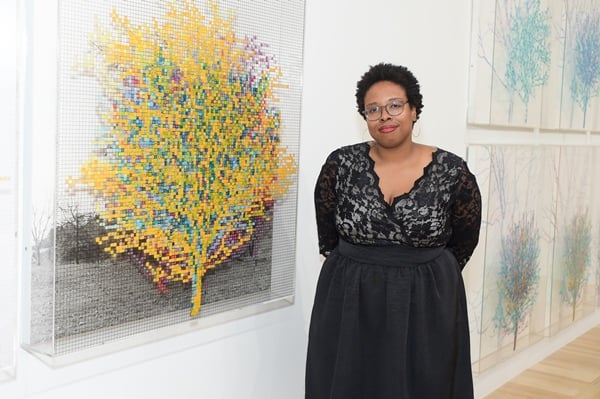
Jamillah James. Courtesy Hammer Museum.
3. Jamillah James
Just about everything at the Institute of Contemporary Art, Los Angeles is new: the name, the 12,700 square-foot space, and even the logo, which was designed by Venice-bound American painter Mark Bradford. And of the latest additions to join the helm, Jamillah James stands as the institute’s most promising player in harnessing what executive director Elsa Longhauser described as the “burgeoning epicenter of artistic and cultural energy [that] has recently emerged in downtown Los Angeles.”
Like any other kunsthalle, the non-collecting ICA, LA will need a continuous stream of blockbuster shows to keep the wheel turning after it opens in 2017. But in the case of a curator who’s handled prodigious breakouts like Njideka Akunyili-Crosby and Alex Da Corte as comfortably as she has seasoned veterans like John Outterbridge, Simone Leigh, and Charles Gaines, James’s record for delivering memorable, high-caliber shows is a reliable indicator of what’s in store for the Southern Los Angeles art world.
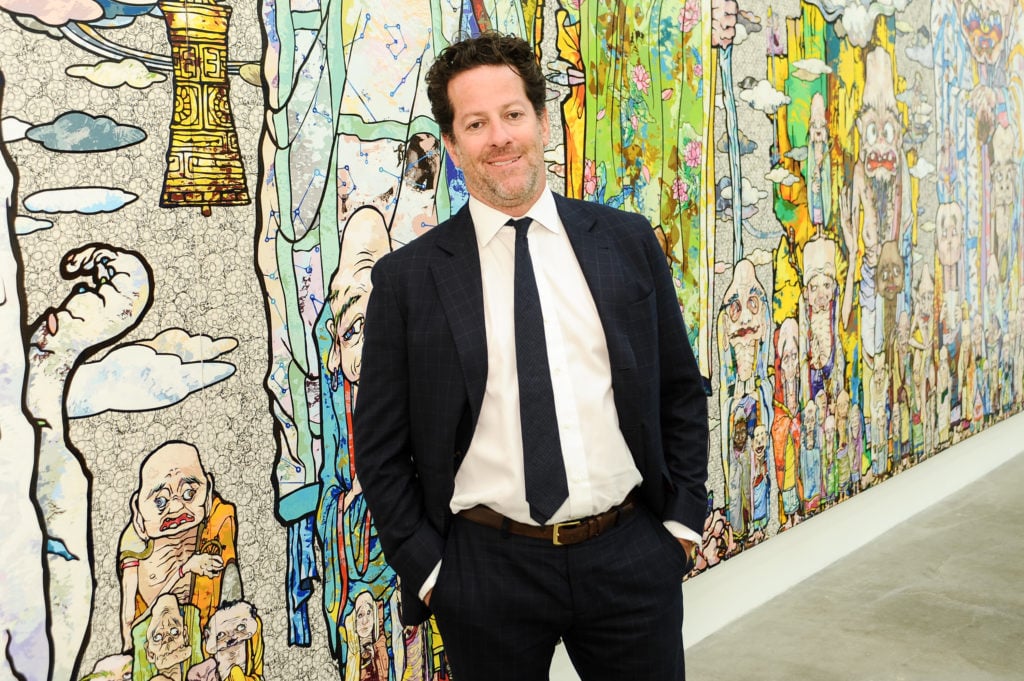
Tim Blum. Courtesy Stefanie Keenan | Getty Images.
4. Timothy Blum
When fame came knocking, Timothy Blum was the art world gatekeeper to open the door. This summer, Kanye West’s polarizing Famous sculpture made its way into Blum & Poe gallery’s Los Angeles space for a private weekend viewing. Having organized an equally head-turning exhibition on cannabis à la Richard Prince the month prior, the dealers Blum & Poe have no qualms entertaining controversy. But their invitation to West is a clear rupture in the fraught and ongoing celebrity-art conversation.
When asked to comment on the show, Blum claimed that West’s status as a celebrity interferes with work that would otherwise be “celebrated and universally supported at the highest level.” Others, meanwhile, would staunchly disagree. Whether or not Blum and Poe plan on pursuing a similar celebrity-powered venture is anybody’s guess, but they take the honor of being one of the first to cross that line.
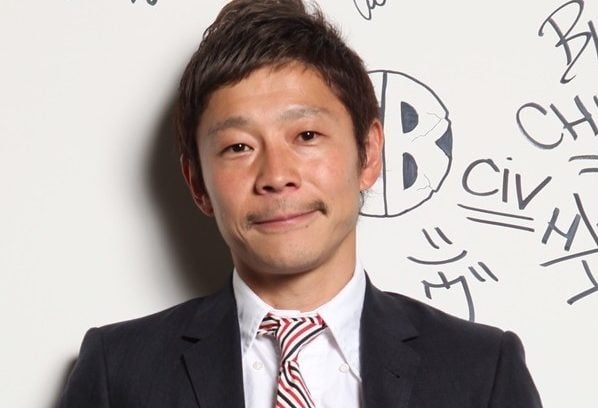
Yusaku Maezawa. Courtesy Yusaku Maezawa.
5. Yusaku Maezawa
Despite his vast fortune—Forbes estimates his worth at $2.8 billion—and high profile in Japan, few in the art world had ever heard of retail fashion mogul Yusaku Maezawa. But that all changed this past spring when he seemingly burst on to the auction scene in May at Christie’s, Sotheby’s, and Phillips.
After it was revealed that Maezawa was the buyer of a record-setting $57.2 million Jean-Michel Basquiat at Christie’s, it also came to light that he dropped an additional $40.8 million on six other blue-chip contemporart artworks, including a $13.9 million Christopher Wool word painting, a $9.7 million Richard Prince “Nurse”, a $6.9 million Jeff Koons lobster, a $2.6 million Adrian Ghenie painting, an Alexander Calder sculpture for $5.8 million, and a Bruce Nauman neon sculpture for $1.69 million. Following his $98-million shopping spree Maezawa said he plans to put the art on public display in Tokyo at his contemporary art foundation, which hosts collection shows twice per year.

Derrick Adams. Courtesy artnet News.
6. Derrick Adams
On the occasion of his sprawling installation at Pioneer Works in Brooklyn this summer, which coincided with a simultaneous show of paintings at Gateway Project Spaces in Newark, artist Derrick Adams told the New York Times that his “practice in general is a middle way of meeting the viewer.” As far as this year is concerned, Adams had a number of opportunities to do just that—and his encounters weren’t limited to his artistic output.
Back in March, Adams, who served as Rush Arts Gallery’s curatorial director for ten years, was tapped to organize a special section at the Armory’s sister fair VOLTA, in which he invited nine up-and-coming artists including Doreen Garner, Ibrahim Ahmed, and Kate Clark. Again, over the summer, Adams took the curatorial lead on “The Beat Goes On,” a hybrid exhibition of visual and sonic works by artists Elia Alba, Kevin Beasley, and Tameka Norris at the School of Visual Arts.
There’s no mistaking that the artist-curator is on an upward trend—and as he’s demonstrated at VOLTA and SVA, he’s just as eager to shine the spotlight on others where he can.
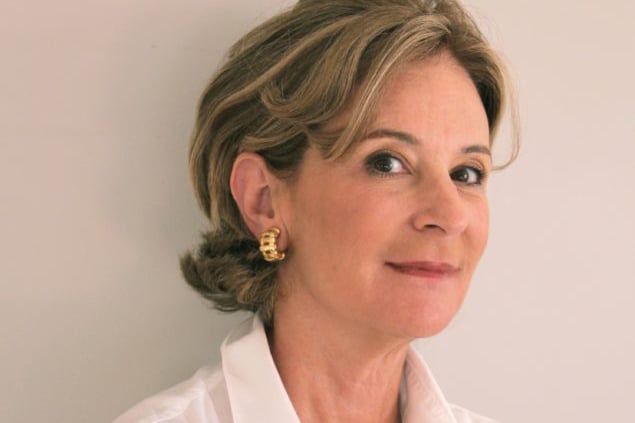
Estrellita Brodsky. Photo by Raul Martinez. Courtesy Estrellita Brodsky.
7. Estrellita Brodsky
As arts patrons and philanthropists go, it is somewhat rare to find someone as active and prominent as Estrellita Brodsky with so much academic firepower to back it up. Brodsky, who was raised in New York City by parents who immigrated from Venezuela (her father) and Uruguay (her mother), received her master’s degree in Impressionist art history from Hunter College in 1996 and her Ph.D in art history from New York University’s Institute of Fine Arts in 2009. Her dissertation focused on Latin American artists in postwar Paris, including Jesus Soto and Julio Le Parc.
In 2008 she curated the first-ever US retrospective of Carlos Cruz-Diez for the Americas Society and in 2012 she curated an exhibition on Soto for NYU’s Grey Gallery.
She and her husband, Daniel, who is chairman of the Metropolitan Museum of Art, have been tireless champions of Latin American art not to mention early supporters of artists like Cuban-born Carmen Herrera, who has only gotten her due in recent years (the Brodskys currently have work on loan to the major Whitney Museum retrospective “Lines of Sight”). The couple created two curatorships at the Met in early 2014 (one devoted to Latin American art).
She also endowed the Estrellita Brodsky Curator for Latin American Art at the Museum of Modern Art, New York, and is a member of MoMA’s Latin American and Caribbean Acquisitions Committee. More recently, as part of the Daniel and Estrellita B. Brodsky Family Foundation, they opened a stunning by-appointment only facility in Chelsea, titled “Another Space,” that aims to further broaden awareness and appreciation for Latin American art. “Another Space” has already held several museum-quality exhibitions to date including a major show of Brazilian artist Paulo Bruscky curated by Clara Kim. Further, the space facilitates grants to museums, universities, and other institutions to advance research and produce exhibitions and publications related to Latin American art. The idea was to create an alternative platform, with a salon-style format that encourages reflection and conversation without the pressures of the market or institutional limitations.
Brodsky is guest-curating a major retrospective of Julio LeParc that will be on view at the Perez Art Museum in Miami (PAMM) during the upcoming Art Basel in Miami Beach.
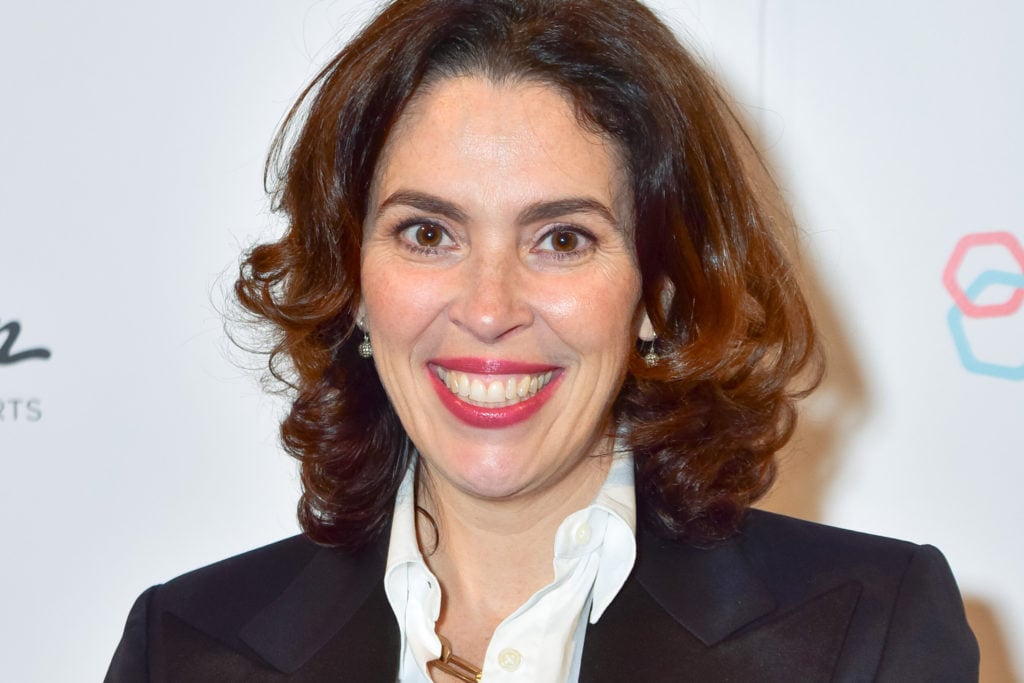
Amy Cappellazzo. Courtesy Sean Zanni | Patrick McMullan.
8. Amy Cappellazzo
Defying the trend of top auction house specialists permanently trading in the sale room to strike out on their own and forge an independent art dealing business, Cappellazzo has come full circle. After an illustrious stint at Christie’s, as worldwide co-head and then chairman of its postwar and contemporary art department, Cappellazzo left to launch advisory firm Art Agency Partners (AAP) in March 2014 with high-profile advisor Allan Schwartzman.
However, earlier this year, Cappellazzo returned to the auction realm—and in a big way—with news that Christie’s rival Sotheby’s had shelled out a whopping $50 million to acquire the small and relatively young business. All of this took place amid a fair share of turmoil at the auction house, as a management shakeup and employee buyout program sparked a staff exodus and plenty of skeptical grumbling about the lofty price tag. Is Cappellazzo’s extensive contact list and savvy sale skills worth it? The upcoming November auction season should be a telling one.
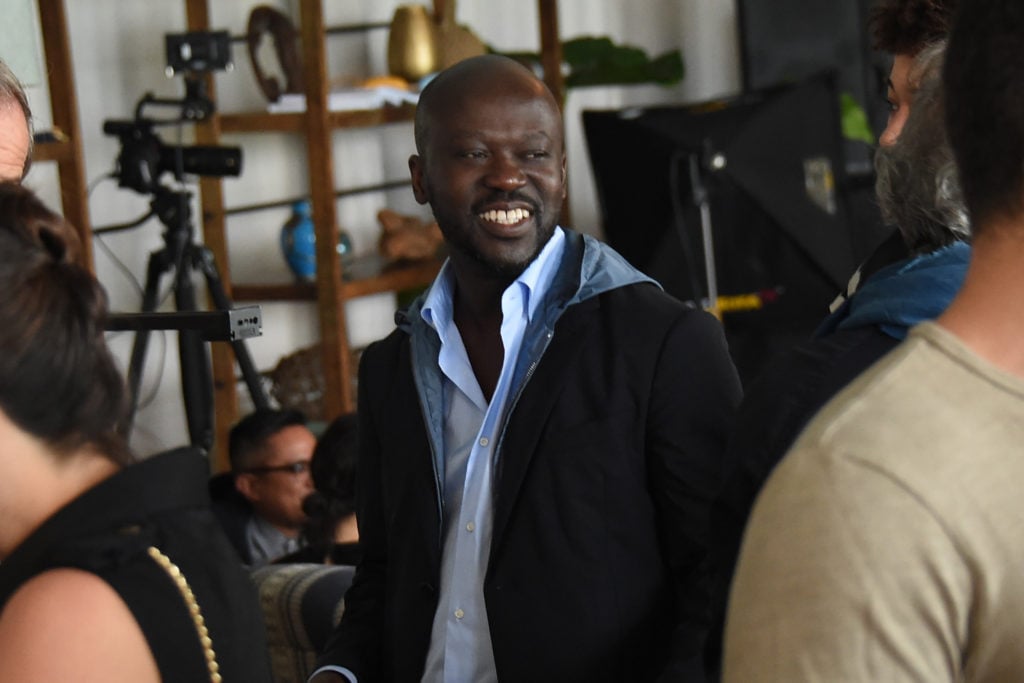
David Adjaye. Courtesy Nicholas Hunt | Getty Images.
9. David Adjaye
In Holland Cotter’s review of the landmark National Museum of African American History and Culture, the critic described the museum’s textures as “chang[ing] at every encounter, giving it visual intrigue and also implying a more contemporary understanding of culture’s fleet, contingent, it-depends-on-who’s-looking dynamics.” But don’t take Cotter’s word for it; after all, he wasn’t the only one to appreciate the design, and the Smithsonian has one Ghanian-British architect to thank for the acclaimed reception.
Despite the success of this commission, David Adjaye, whose international projects keep him in the air, doesn’t seem to be stopping anytime soon. Notably, the architect was tapped by Thelma Golden to develop a new building for the Studio Museum in Harlem. “[T]here will be studios by the front window on 125th Street,” Adjaye explained about the new space in an interview with Vogue, adding that “the artists can look out, and you’ll be able to see them.”
With key projects in cities like Moscow, Washington, and Oslo (where he designed the Nobel Peace Center) already in his portfolio, and commissions in New York and Denver on the horizon, Adjaye’s architectural influence is rapidly expanding.
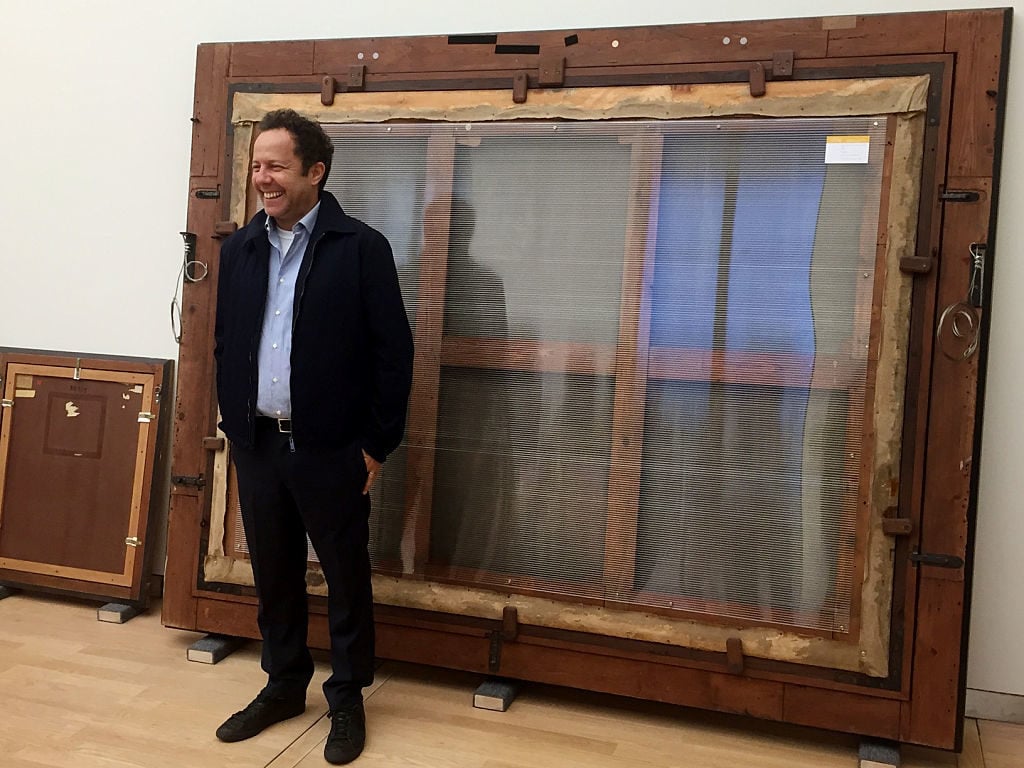
Brazilian artist Vik Muniz stands in front of his reproduction of the back of Rembrandts painting The Anatomy Lesson of Dr Nicolaes Tulp in The Hague on June 7, 2016. Courtesy of JO BIDDLE/AFP/Getty Images.
10. Vik Muniz
It doesn’t take long to realize that Brazilian artist Vik Muniz’s unorthodox and often radical approach to art making—employing unusual materials like thread, sugar, chocolate syrup, and shredded vintage pictures and post cards—extends to every endeavor he undertakes. At his current exhibition at Galeria Nara Roesler in Sao Paulo, “Handmade,” (through November 5), which features about 70 works, he toys with viewers expectations and visual certainties, partly by mixing actual materials with photographed imagery—thus challenging the audience to separate the “real” from the “reproduced”.
The artist once said: “I am a photographer when I photograph, and a draughtsman when I draw, but an artist is what I’m always becoming.” Undoubtedly, the 2010 Academy Award nominated documentary Wasteland kicked him up to an even broader level of global fame; the film documented the artist creating a series of “garbage pictures,” by working with a group of “catadores” (garbage pickers) in a massive trash dump on the outskirts of Rio de Janeiro. All the money raised by sales of the pictures went to the pickers themselves.
Muniz’s tireless energy is also evident in his two recent major undertakings: a major installation for the opening ceremony of the Paralympics in Rio de Janiero and the soon-to-open Escola Vidigal, a new, experimental school in a Rio favela that Muniz spearheaded and funded that will offer tuition-free preschool and after school programs for children aged 4 to 8. Designed by architects Basil Walter and Brenda Bello of New York-based BWArchitects, it was one of 15 projects that represented Brazil at the Venice Architecture Biennial this year. The frieze of children’s faces on the façade is by French street artist JR.
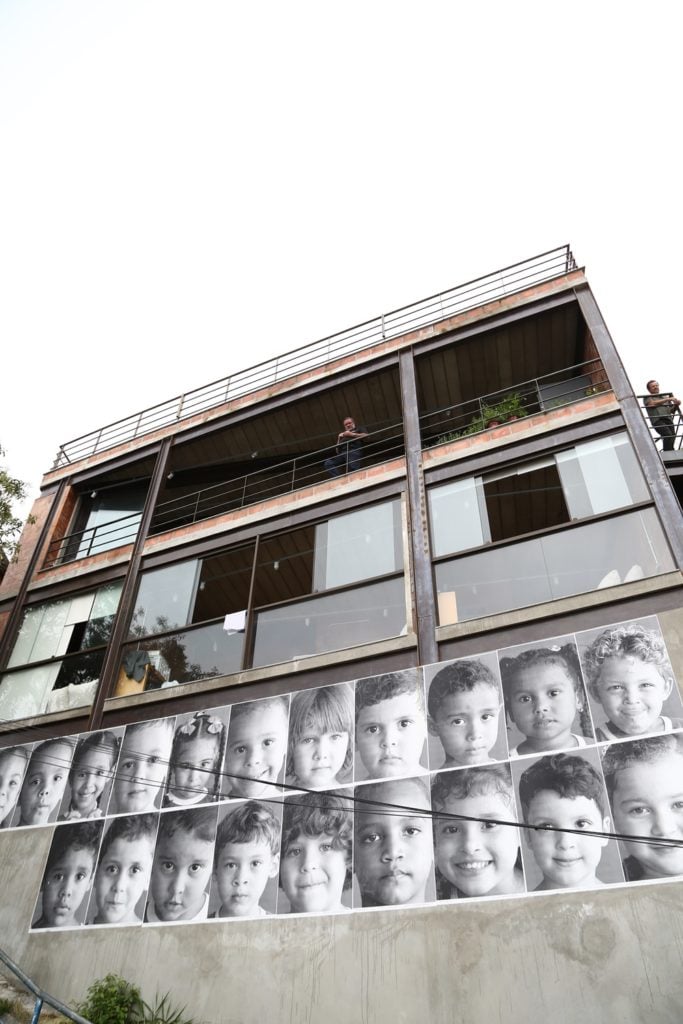
Vik Muniz’s new tuition-free school, Escolo Vidigal, in a Rio favela. The frieze is by French artist JR. Courtesy Vik Muniz.

